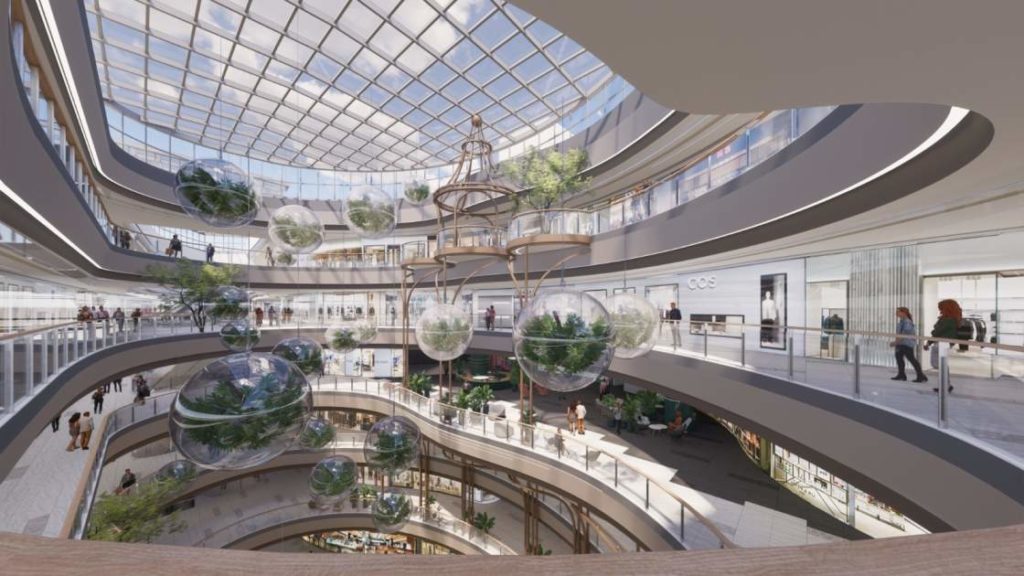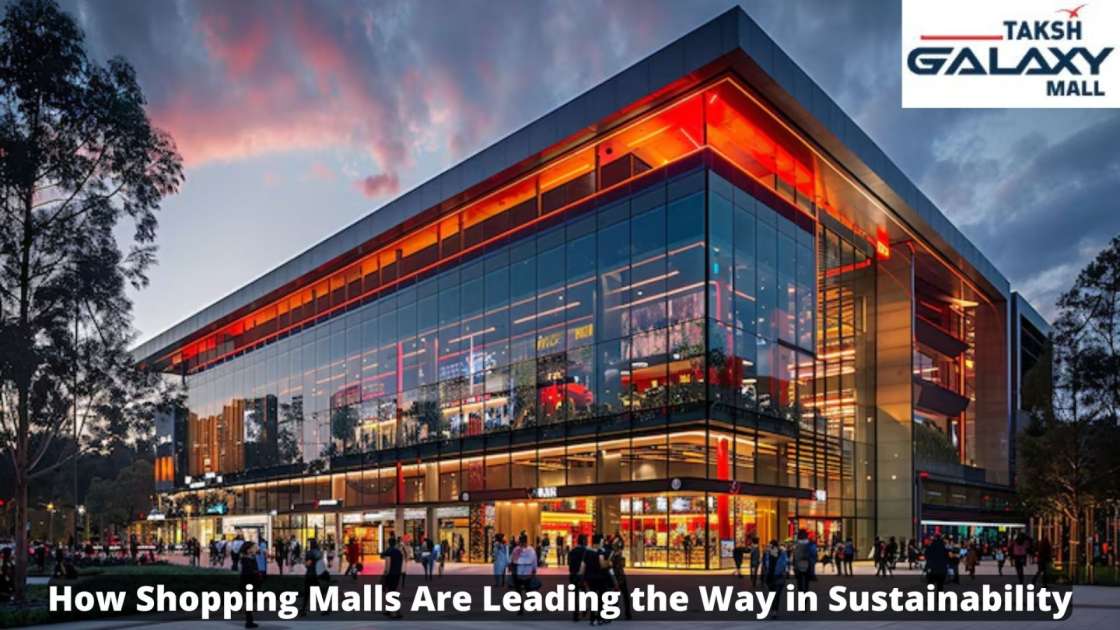Table of Contents
- Introduction
- The importance of sustainability in shopping malls
- Sustainable practices in modern malls
- Case study: Taksh Galaxy Mall in Vadodara
- The role of energy efficiency in shopping mall sustainability
- Sustainable retail spaces: A future trend
- How are malls contributing to waste reduction?
- Conclusion
- FAQs
Introduction
Sustainability is no longer a trend. It is part of business today. Shopping malls are large buildings that consume lots of energy and resources. They are now attempting to go green. They wish to make shopping fun and save the world too.

Additionally, individuals are more conscious of climate change and demanding greener options. Shopping malls are paying attention and transforming. They are conserving energy, reducing waste, and using improved materials. This is beneficial to the planet as well as individuals that visit there to shop. By going green, shopping malls are being leaders and creating a path forward for others. This change is assisting in building a better, sustainable world for all.
The importance of sustainability in shopping malls
Shopping malls do a lot to harm the environment. They consume a lot of electricity and generate a lot of waste daily. Due to this, it is extremely necessary that malls adopt environmentally friendly ways of minimizing their impact on the environment. Moreover, malls are communal areas where there are a number of people converging; thus, their behavior may affect many individuals.
By opting for going green, malls are a good example for shoppers as well as other companies. They demonstrate that it is feasible to maintain a big space in an environment-friendly manner. Therefore, present-day shoppers are also turning greener. They want to shop at places that are concerned about the earth and promote green ideology.
As a result, malls are beginning to evolve. They are incorporating more green technologies and more efficient systems to conserve energy and cut down on waste. Shopping malls now have the opportunity to be leaders. They can mold not only the future of retail but also assist in creating a better and greener world.
Sustainable practices in modern malls
Modern shopping malls began implementing a full array of green practices. A few of them are energy-efficient light fixtures, water-conserving fittings, waste recycling, and environmentally friendly building materials. A few of these common practices are
- Energy-efficient air conditioning and lighting systems
- Water-conserving fittings and rainwater collection
- Alternative energy sources such as solar panels
- Waste reduction and recycling programs
- Green building material
Such activities not only save the environment but also lower operation costs for the owners of the mall. Moreover, they are beneficial to environmentally friendly tenants and consumers as well, hence the win-win strategy.
Case study: Taksh Galaxy Mall in Vadodara
One of the best-known cases of a shopping mall taking the lead in sustainability is Taksh Galaxy Mall in Vadodara. The mall has implemented numerous green initiatives in order to lower its environmental impact. For example, it has energy-efficient lighting and water conservation measures.
Besides, waste reduction is also targeted by Taksh Galaxy Mall. It has recycling stations and promotes the tenants to reduce packaging waste. These are steps that complement its vision of being a model for environmentally friendly shopping malls in the area.
Such initiatives by Taksh Galaxy Mall are a wonderful sign of how shopping malls can adopt sustainable practices without diminishing the quality of the shopping experience.
The role of energy efficiency in shopping mall sustainability
Energy saving is also a very significant aspect that could assist in increasing the sustainability of shopping malls. Shopping malls consume a lot of electricity daily, and thus saving energy is most important. Energy saving through the usage of LED bulbs, energy-saving air conditioners, and using motion sensors in all their electrical appliances is practiced by all the malls. All these slight changes conserve energy and reduce their carbon emissions.
Another positive move is the utilization of renewable energy. Solar panels are being fitted onto the roofs of most of the malls. Additionally, it assists them in generating clean energy and using fewer fossil fuels. It also proves to be cost-saving in the long term.
Furthermore, with its energy efficiency, the mall will save the world and reduce their electricity bills. All these equate to enhancing customer experience and conveying the message that the mall values the world. Energy conservation is a smart and proper way of running big spaces such as malls. It’s business-positive, consumer-positive, and world-positive.
Sustainable retail spaces: A future trend
Sustainability of shopping malls is here to stay. It’s the way forward for retail. Retailers are responding to consumers who want greener alternatives, and it is happening now. Within a few years, we can expect to see growing numbers of shopping malls with green technologies.
However, shopping malls such as the best shopping centre in vadodara are setting an example. They are adopting green design and operations practices. Not only are these environmentally friendly, but they also heighten consumers’ shopping pleasure. Green-certified malls will become the standard in the not-so-distant future, and other sectors will follow suit.
How are malls contributing to waste reduction?
Waste disposal is another big industry where shopping malls are playing their part. Shopping malls produce tons of waste in the form of food waste, plastic waste, and packaging waste. But efficient waste-reduction machinery is installed in the majority of shopping malls.
- Recycling programs: Garbage bins are installed in malls where materials that can be recycled, such as plastic, paper, and glass, are segregated.
- Composting: Food waste is being composted in order to avoid landfill waste.
- Zero-waste initiatives: Certain shopping malls are adopting a zero-waste initiative where nearly all the waste is recycled or reused.
By doing so, besides saving the environment, it also encourages customers towards sustainable consumption.
Conclusion
Finally, malls are embracing the serious cause of promoting sustainability. With power-saving measures being implemented, reducing waste, and green building, malls are leading the retail industry by example. Furthermore, properties such as Taksh Galaxy Mall at Vadodara are also leading the trend of going green and paving the way for other malls to take similar steps.
With increasing concern for sustainability, the best mall in Vadodara and other top 10 biggest mall in gujarat are starting to introduce green solutions. However, malls are no longer just places where one shops; they are starting to become hubs of sustainability. That change is not only healthy for the world around us, but it also helps build a better, greener world for all of us.
The initiatives of these malls will certainly encourage others to adopt sustainability in their operations. As the pressure for sustainability mounts, shopping malls are actually leading the way towards a greener and more sustainable future.
FAQs
- Why is sustainability important for shopping malls?
Malls can save energy and reduce waste and make the environment more friendly for upcoming generations.
- How do the malls save energy?
By using LED lights, solar panels, and energy-efficient air conditioners to reduce power consumption.
- What is one eco-friendly feature in modern malls?
The majority of malls use rainwater harvesting systems to save water and reduce wastage.
- Can environmentally friendly malls capture more customers?
Indeed, green malls are luring nature lovers who enjoy the outdoors and prefer going green during shopping.





